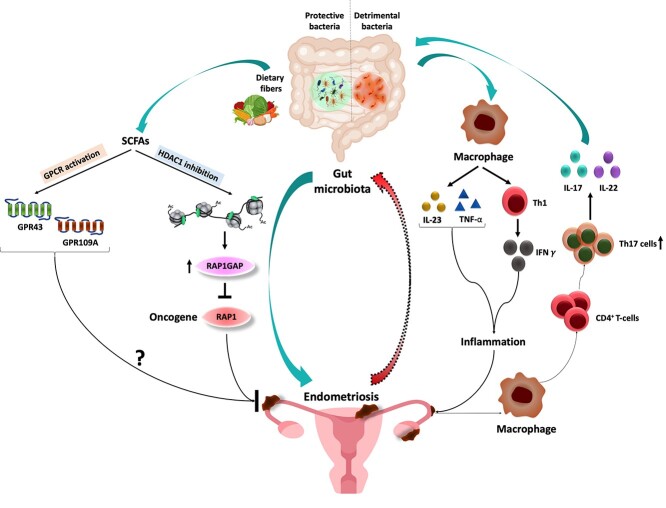Figure 3.
Schematic illustration of the mechanisms underlying the gut microbiome–endometriosis crosstalk. The gut microbiota structure is significantly altered (detrimental) in endometriosis that may be greatly involved in promoting the disease through disruption of gut barrier integrity and the resulting activation of macrophages and inflammation (shown on the right). The endometriotic lesions may, in turn, activate macrophages and the Th17/IL22 axis to promote conditions conducive to gut inflammation. On the other hand, the commensal gut microbes (protective) are shown to prevent endometriotic lesion formation and disease progression (shown on the left). This latter protective effect is shown to be mediated by gut microbiota-derived SCFAs in a G-protein-coupled receptors (GPCRs)-mediated signaling-dependent mechanisms through inhibition of Class I and Class II histone deacetylases (HDACs) and upregulation of RAP1GAP (tumor suppressor gene) signaling.

